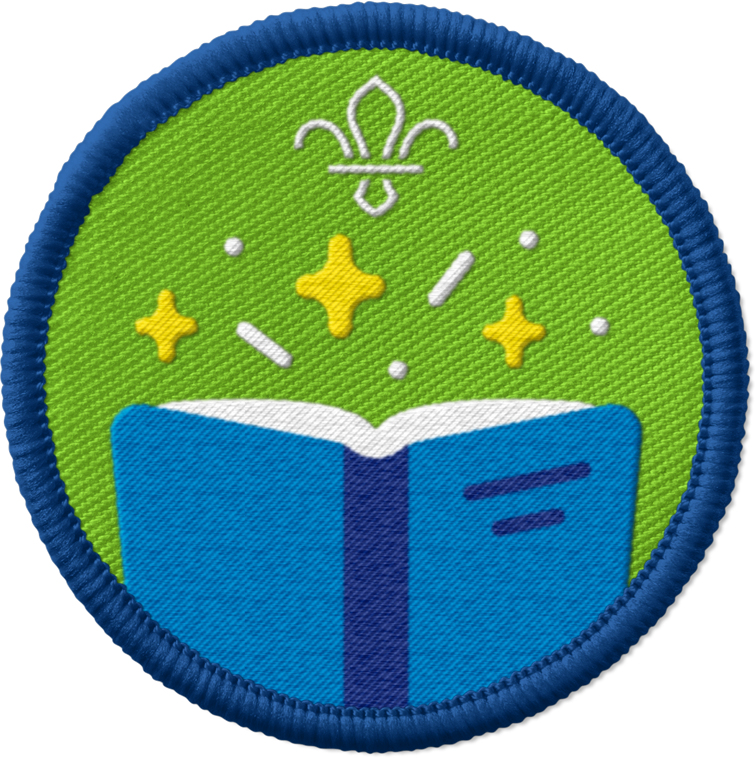Story stones
You’ll need
- Access to water
- Paint
- Paint brushes
- Something to protect surfaces (for example, newspaper or tablecloths)
- PVA glue
- Scissors
- A4 paper
- Pens or pencils
- Stones
Before you begin
- Use the safety checklist to help you plan and risk assess your activity. Additional help to carry out your risk assessment, including examples can be found here. Don’t forget to make sure all young people and adults involved in the activity know how to take part safely.
- Make sure you’ll have enough adult helpers. You may need some parents and carers to help if you’re short on helper.
Setting up the activity
- You’ll need enough large stones for everyone to have their own. You could collect them yourself or you could ask everyone to bring a stone to the next session.
- Print enough copies of the ‘Bring your characters to life’ sheet for everyone to have their own.
- Ask everyone to bring their favourite stories to the meeting.
Our favourite stories
- Everyone should sit in a large group.
- Tell everyone that you're going to make some story stones to help people to tell their favourite story.
- Go round and ask people what their favourite story is that they've brought. You could ask them what they like about it.
- If you want to, or for Squirrel story time, choose one or two people's stories to read to the group.
Bring your characters to life
- Gather everyone back in a circle.
- Tell everyone they're going to make story stones. They can either be based on their favourite story that they brought in, another story they know, or from their own story they've created themselves.
- Before starting, cover the floor or table with newspaper or a tablecloth.
- Everyone should get their stone or a set of stones, depending on how much time you have.
- People should now turn their stones into characters or different objects from their story.
- They could paint the stone, use stickers or other craft materials, or glue on pictures. They could use the ‘Bring your characters to life’ sheet, too.
- Once finished, everyone should help to tidy away all the paints, glue, and paper and leave their stone(s) somewhere safe to dry.
Create your own story
- Once the stones have dried, split everyone into smaller groups. You could run this activity over two weeks.
- Each group should work together to create their own new story using their stones. Each person should use at least one of their stones as part of the story.
- The story can be about anything they want. Encourage people to be as creative and imaginative as they can to see if they can make up a new story.
- Make sure everyone in the group uses their stone and has role in telling the story if they want to.
- Each group should decide how they’ll tell their story. It’s up to them whether they want to write it down, each draw a part of the story, or act it out.
- Each group should practise reading or performing their story.
- Gather everyone back together into a large group. Now, everyone can perform their story for another group or for the whole group.
- Alternatively, people could work individually or in pairs to create their story, too.
Reflection
Create your own story
- Why was it important for everyone to have a role in the story?
- How was each group creative?
Bring your characters to life
- How do people feel about the story they’ve created?
- Are people proud of the stone painting they made? Why?
Safety
All activities must be safely managed. You must complete a thorough risk assessment and take appropriate steps to reduce risk. Use the safety checklist to help you plan and risk assess your activity. Always get approval for the activity, and have suitable supervision and an InTouch process.
- Scissors
Supervise young people appropriately when they’re using scissors. Store all sharp objects securely, out of the reach of young people.
- Glue and solvents
Always supervise young people appropriately when they’re using glue and solvent products. Make sure there’s plenty of ventilation. Be aware of any medical conditions that could be affected by glue or solvent use and make adjustments as needed.
Encourage literacy by supporting everyone to write, read, and say at least some of the words in their stories.
It’s OK if some people need help to write down parts of their stories, or if they want to work in pairs to create their stones. Adults can support each young person to decide whether they want to paint the stones or use the pictures on the sheet.
All Scout activities should be inclusive and accessible.
People could perform their stone stories to the people they live with.
Anyone who’s made up a story before, or loves being imaginative, could share some top tips during the activity.
